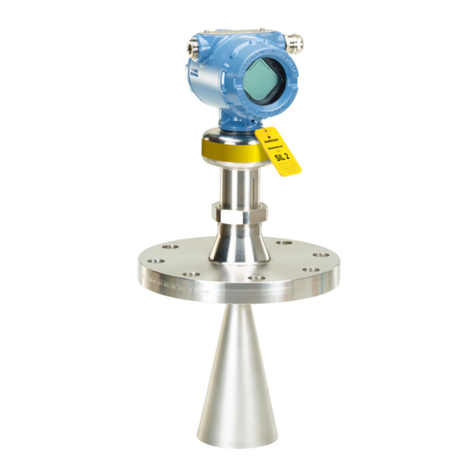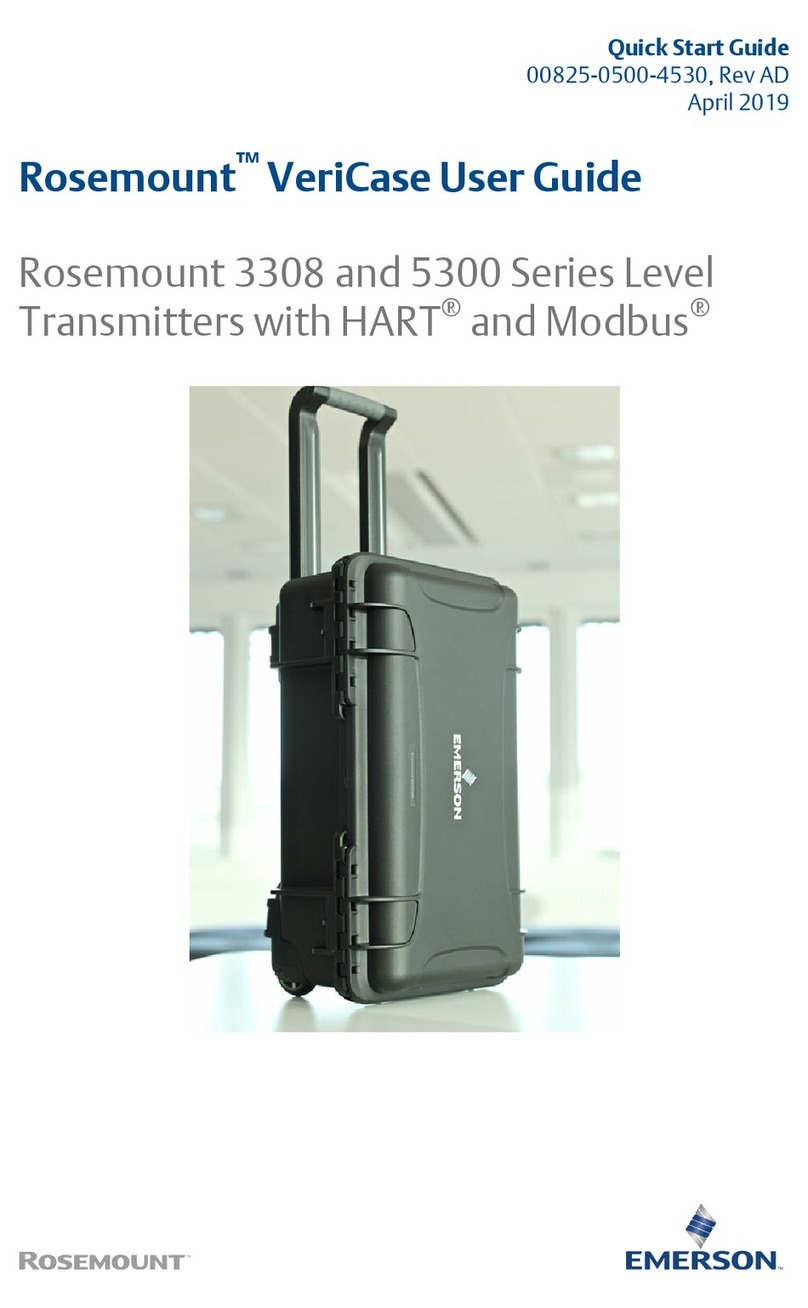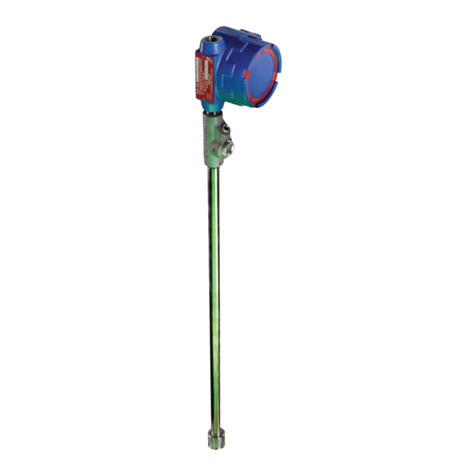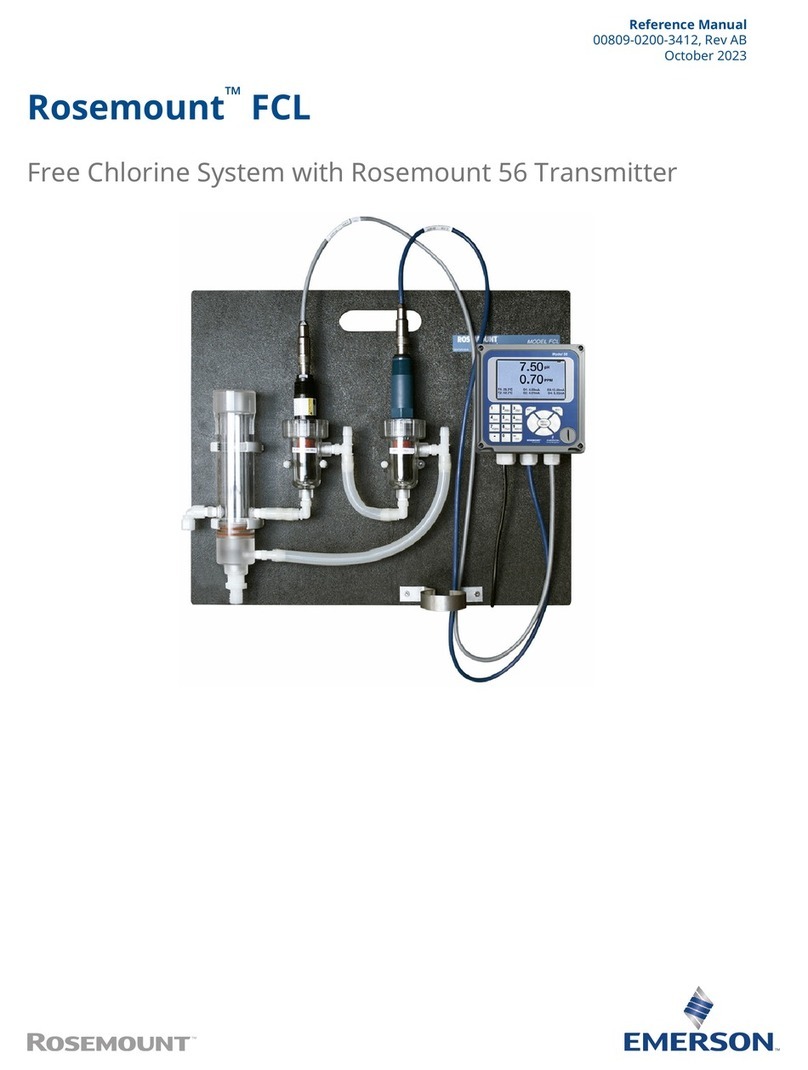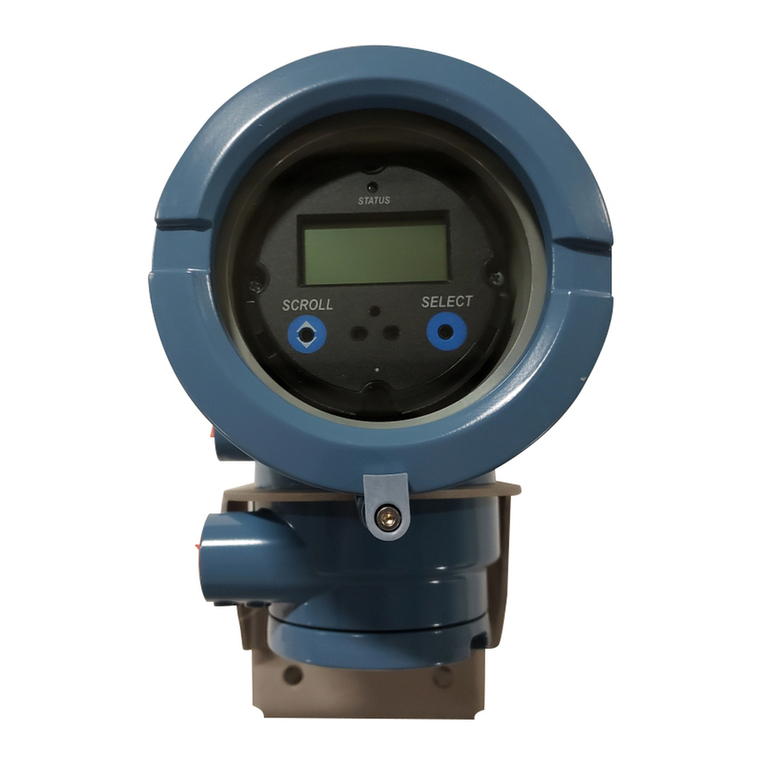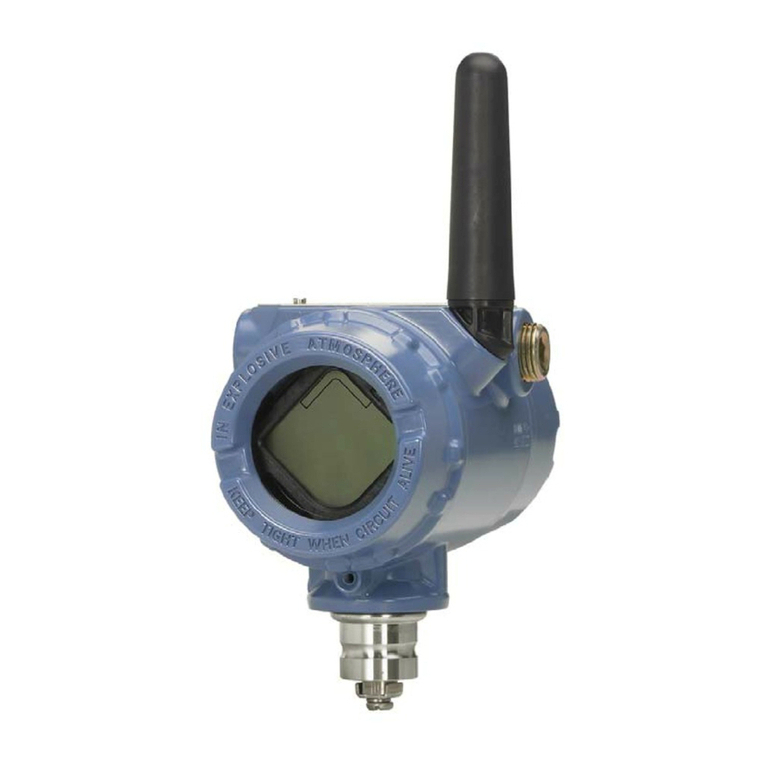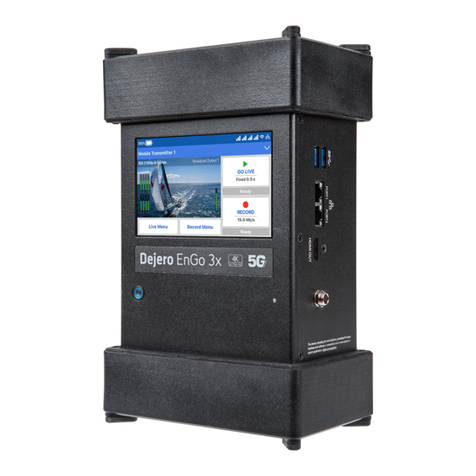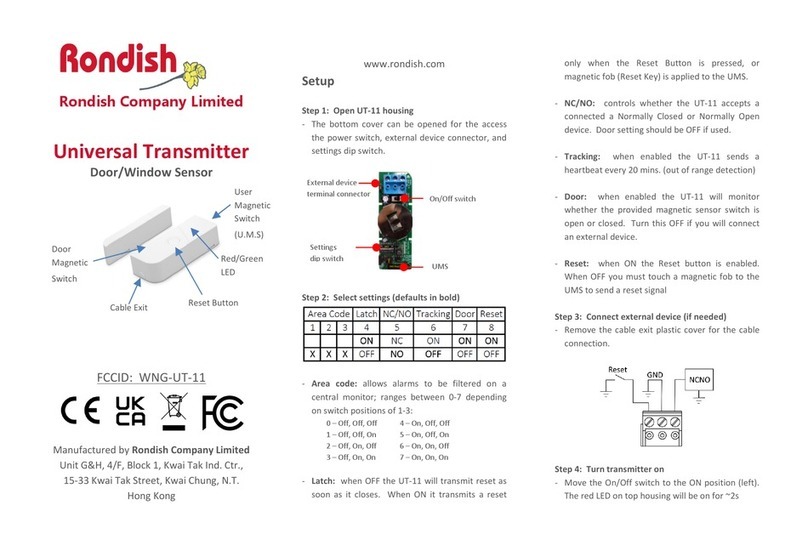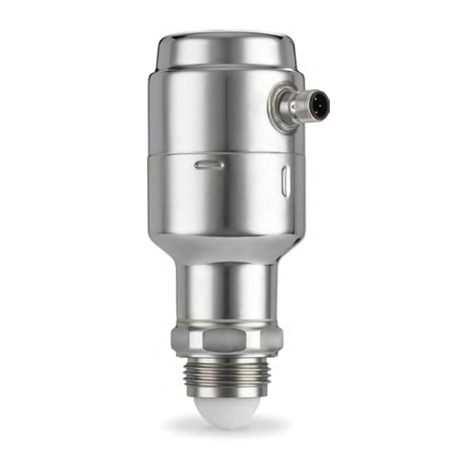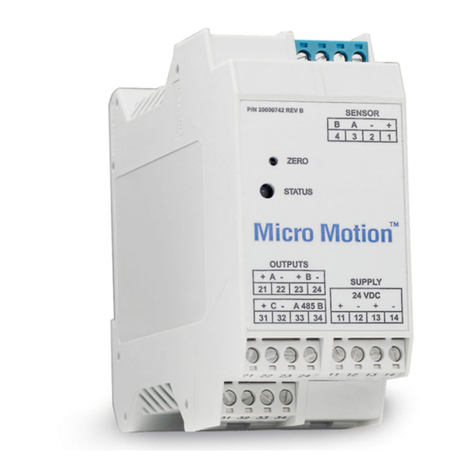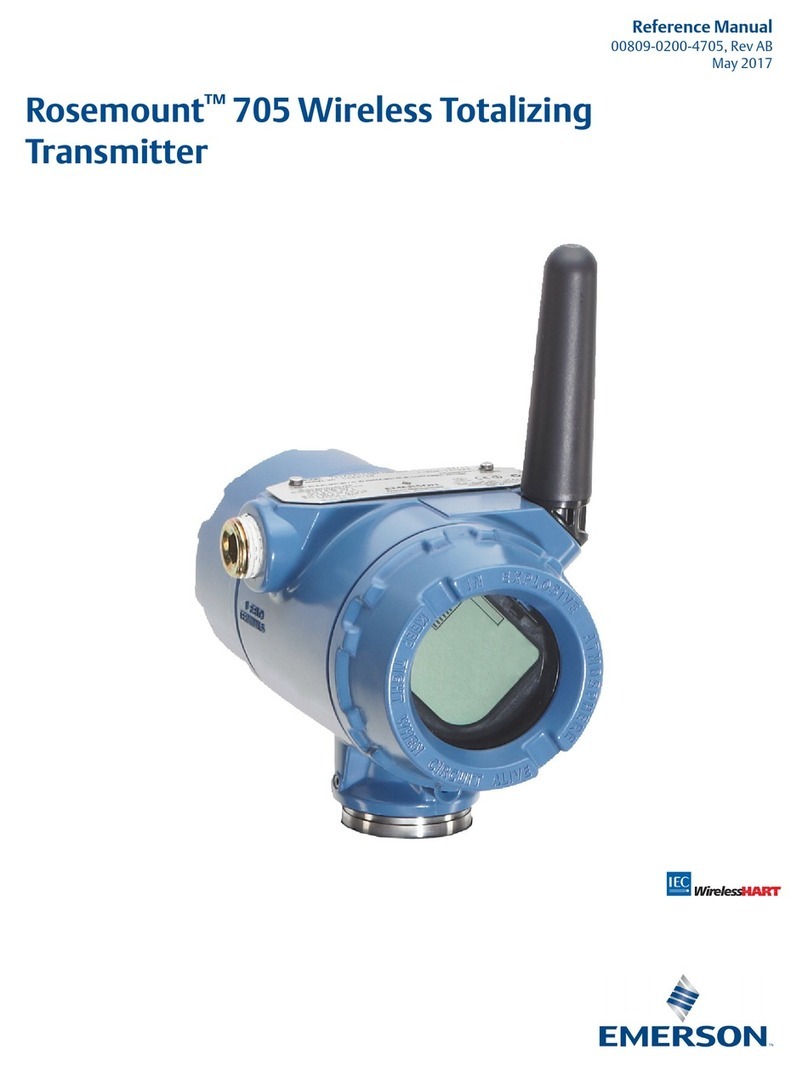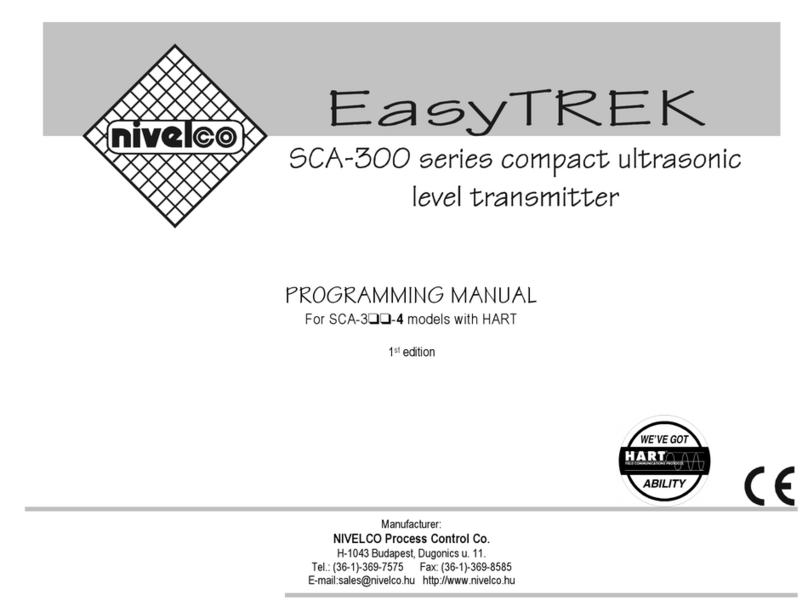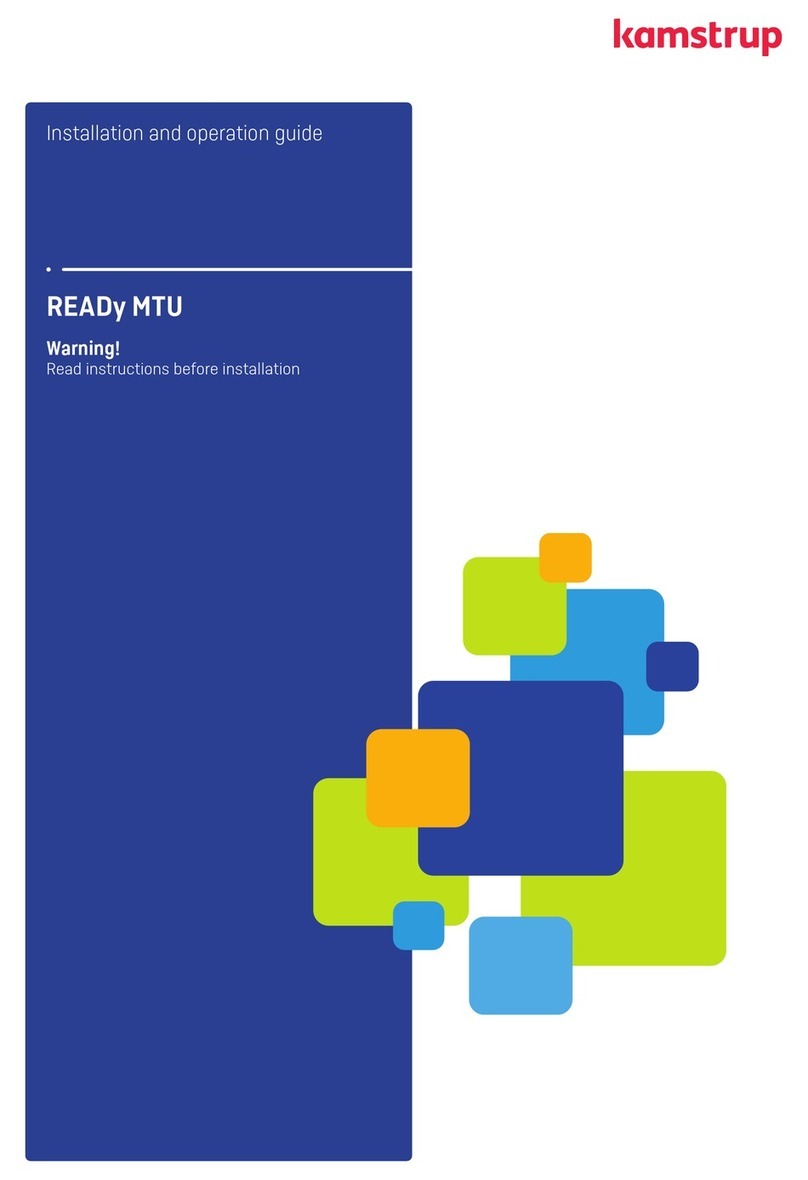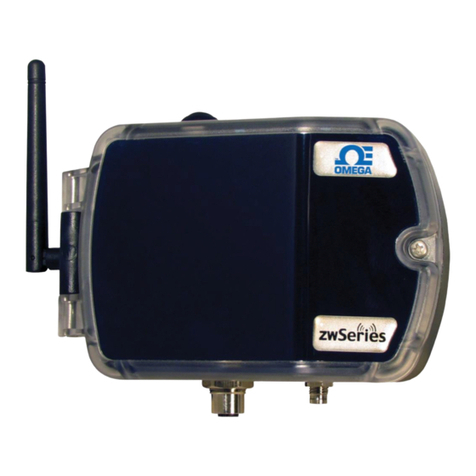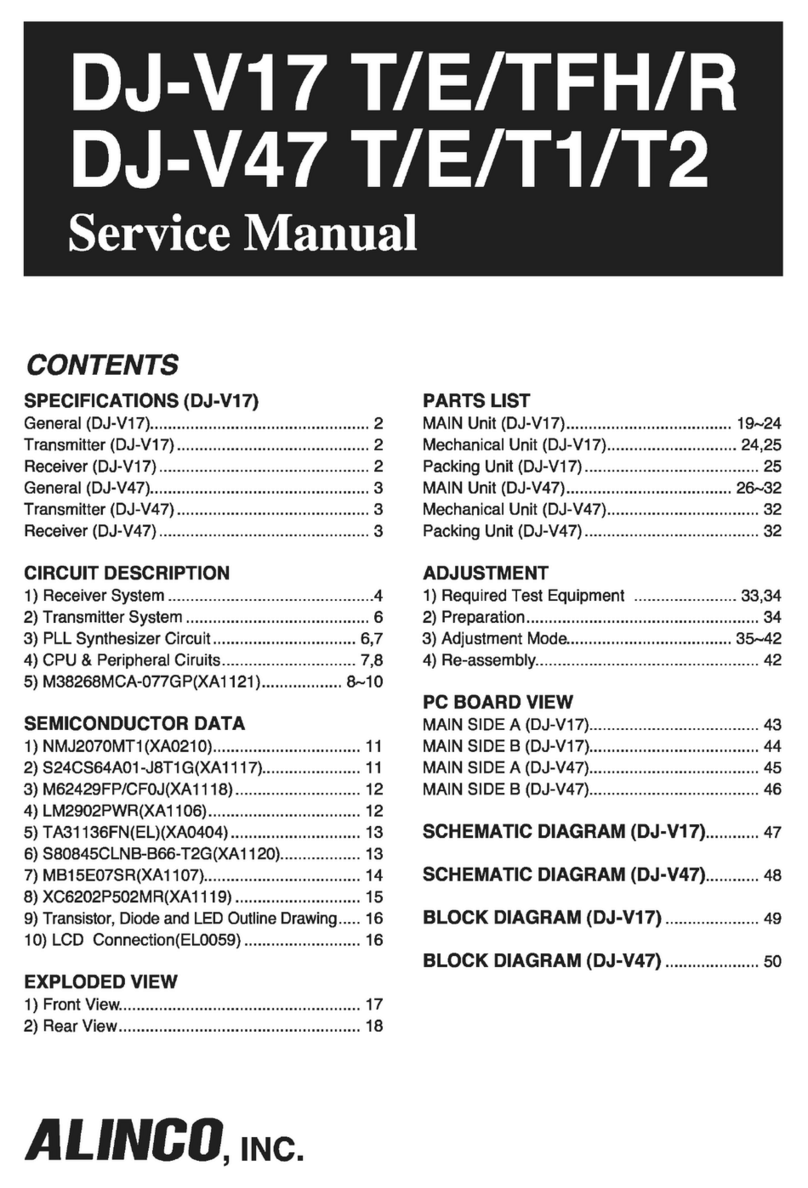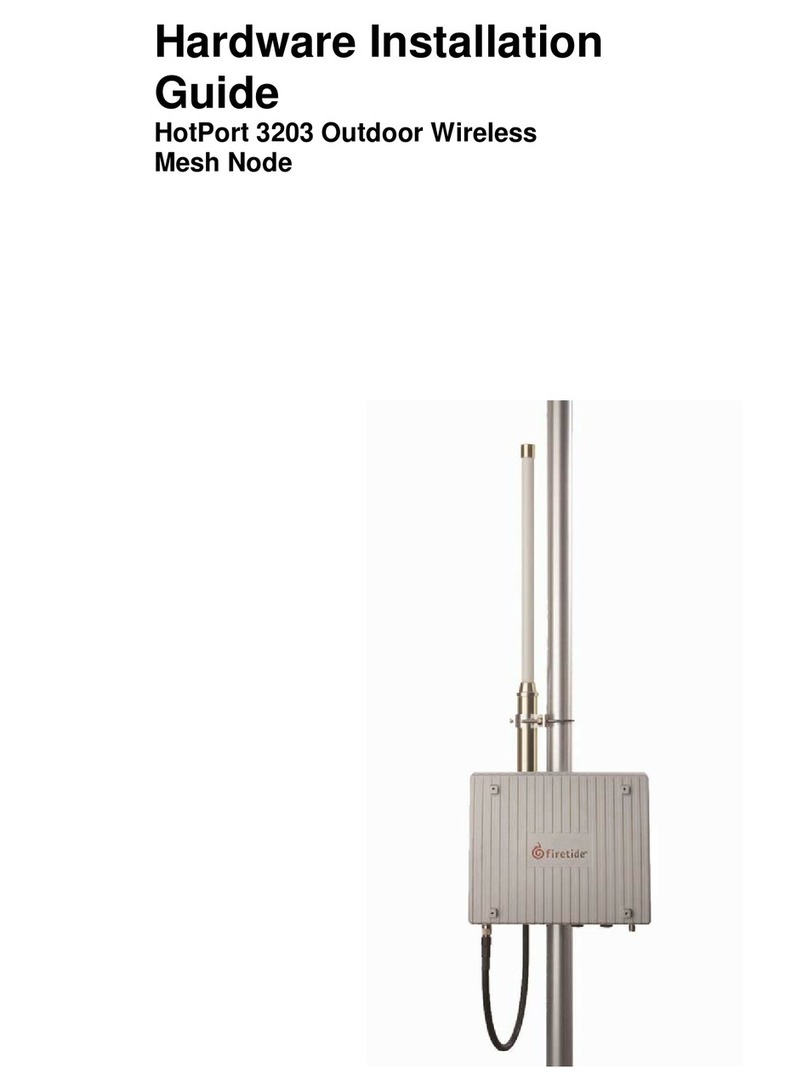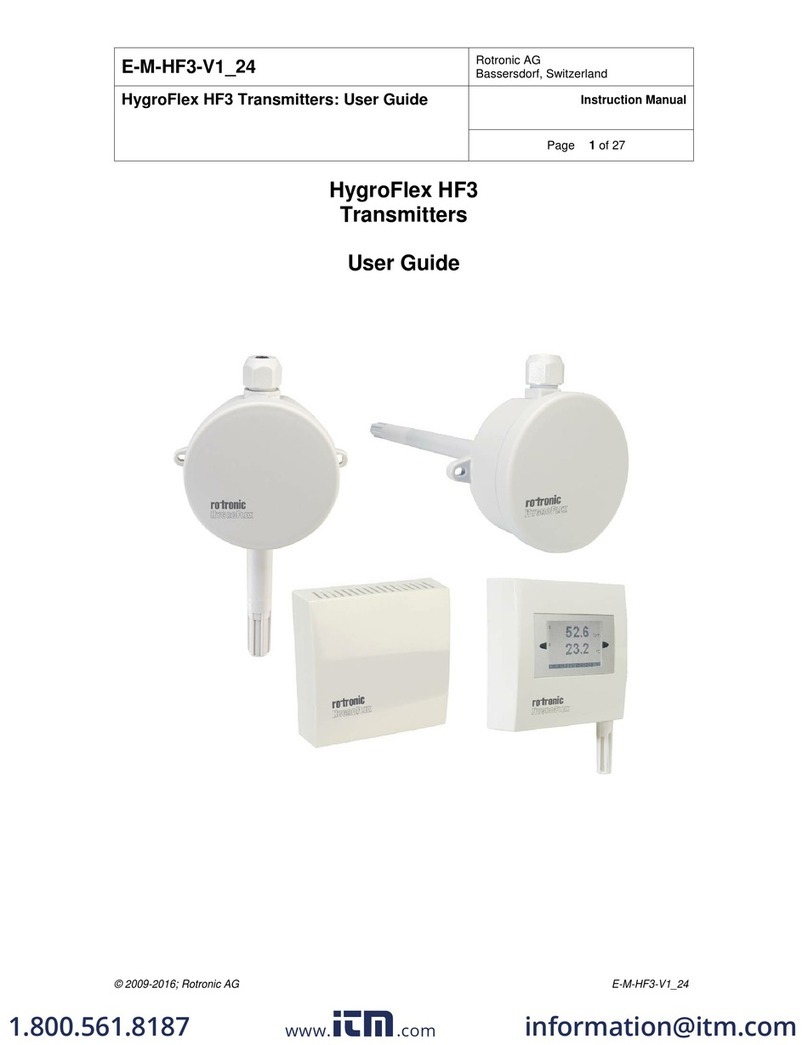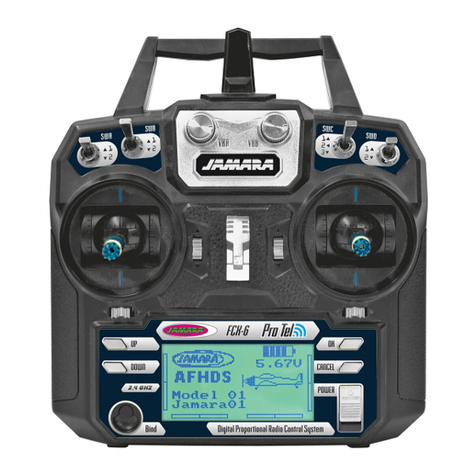
August 2020
L231040 Rev AD
7
Calibration routines are included in the software to the 0%
and 00% points for any distance desired. Even reverse
calibration is a simple task using the software routines.
Reverse calibration is desirable if ullage instead of level is
required, or when the probe is installed with bottom mount
electronics.
Level Transmitter. This transmitter computes the distance
between the float and the detector from the elapsed time
measurement. A specific time window becomes active only
for a short time after the interrogation pulse is applied to
the waveguide. Any feedback signal, received before and
after this window, is rejected as noise. Even signals received
during the active window are evaluated and filtered so that
only high integrity data is accepted.
The conditioned signal is converted to a percent of full-scale
number and written to the D/A Converter. The scale is
defined by the calibration procedure and it corresponds to
the output span (0%- 00%).
Basic Level Transmitter Simplified Block Diagram
The LTM-350 transmitter has four output configurations.
. Primary Level: The most basic version of this
transmitter is that it computes the distance between
the float and the detector from the elapsed time
measurement. A specific interrogation pulse is
applied to the waveguide. Any feedback signal
received before and after this window is rejected as
noise. Even signals received during the active
window are evaluated and filtered so that only high
integrity data is accepted. The conditioned signal is
converted to a percent of full-scale number and a
number representing the distance and output as an
analog and digital HART signal.
2. Primary Level and Interface Level: A second float
may be added below the first, and the second
output will be calibrated automatically. The second
time interval is timed in the same manner as the
first one to derive the position of the heavier float.
The two floats require a separation of
approximately three inches. The float size,
geometry, and magnetic strength all play a factor in
how close the two floats can be without interfering
with each other. (Only via HART Protocol)
3. Primary Level and Temperature: An optional
temperature sensor is embedded inside the bottom
tip of the probe, and it is configured to be the third
digital output of the transmitter, and comes factory
calibrated for the operating range of -50 °C to 49
°C (-58 °F to 300 °F). (Only via HART Protocol)
4. Primary Level, Interface Level, and Temperature:
This options is called a ‘full- blown” unit and offers
all three possible outputs. (Only via HART Protocol)
A deadband of approximately three inches, next to the
detector, is fixed in the software and the float is not
permitted to enter this area. If this happens output
readings maybe erratic or go to fail mode.
Section 3: Installation and iring
3.0 MLI Mount Transmitter Installation
The LTM-350 can be mounted to the side of a Magtech MLI
series level indicator using a special mounting bracket and
stainless steel hose clamps. When mounting the transmitter
to a MLI the active sensor region of the probe should fall
within the centerline of the process connections on the MLI.
If the transmitter deadband region is inside the centerline of
the process connections the transmitter will not output an
Please Note:
Configuration options must be chosen at quot
•During Insta ation, do not attempt to twist or turn the
head of the transmitter. Damage to the detector
assemb y can occur if the head is rotated. If head is
oose, contact factory immediate y.
Warning:
•
If the instrument is used as an exp osion proof (exp)
device then exp conduit must be sea ed within 18
inches of the termination point



